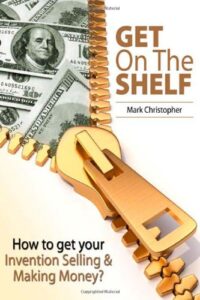Bringing an invention to market involves several key steps, from securing a patent to developing a business strategy. Here are the Top 10 books on how to get a patent and take your idea or invention to market, preceded by a quick guide to help you navigate how to get a patent and take your idea or invention to market process.
How to Get a Patent and Take Your Idea or Invention to Market
1. Document Your Invention
-
- Keep Detailed Records: Document every step of your invention process. Include sketches, descriptions, and dates.
- Build a Prototype: Create a working model of your invention to demonstrate its functionality.
2. Decide Whether the Patent Process is a Match for You
-
- Search Existing Patents: Use databases like the USPTO to ensure your invention is unique.
- Hire a Professional: Consult with a patent attorney or agent.
3. Prepare and File a Patent Application
-
- Provisional Patent Application: Provides a one-year period to further develop your invention.
- Non-Provisional Patent Application: Requires a complete description of the invention and claims.
4. Market Your Invention
-
- Develop a Business Plan: Outline your strategy for bringing the invention to market.
- Protect Your Intellectual Property: Consider trademarks and copyrights for additional protection.
- Seek Funding: Look for investors or crowdfunding opportunities.
- Manufacture and Distribute: Find manufacturers and distributors to produce and sell your product.
Top 10 Books on Ideas, Inventions, and Patents
1. How to Make a Patent for an Idea: Survive the Invention Process, Help Humanity, and Make a Ton of Money by Herb Uhl
Uhl, known for his practical inventions and repurposing skills, offers a wealth of knowledge from his extensive experience, including creating the first two-wheeled ATV. One of the most noteworthy aspects of Uhl’s book is his emphasis on the option of bypassing the patent route entirely. Unlike many other guides that focus solely on the patenting process, Uhl explores the possibility of going straight to manufacturing and marketing. The author delves into various strategies for developing product ideas, engaging in advanced thinking processes, and repurposed inventions. At 95 years old, Uhl shares cautionary tales from his extensive experience, covering all aspects of idea promotion, patenting, manufacturing, funding, and partnering. These stories provide practical lessons and highlight potential pitfalls. Uhl passionately believes that everyone has a million-dollar idea that can benefit society. He urges readers not to hide their ideas out of fear or self-doubt but to participate actively in the evolutionary innovation process. Whether you’re considering patenting your idea or exploring alternative routes, Uhl’s insights will help you navigate the invention process effectively and profitably.
2. How to Patent an Idea or Invention An Easy-To-Read Guide for the Process of Getting a Patent or ‘Patent Pending’ Provisional Patent (How to Get a Patent) by J.P. Schafer
Schafer breaks down the complexities of obtaining a patent into easy-to-follow steps, making it accessible for beginners. A unique feature of Schafer’s book is his detailed discussion on avoiding scams and pitfalls in the patenting process. He provides practical advice on how to identify and steer clear of fraudulent services and offers tips on finding reliable patent attorneys and agents. This focus on protecting inventors from common traps is a valuable addition that is often overlooked in other patenting guides. The book includes practical tips on when to patent, where to go, and what to do, helping inventors make informed decisions at each stage. Schafer explains the various terms and fees associated with patenting, ensuring that readers have a comprehensive understanding of the financial aspects involved. J.P. Schafer’s clear and concise guidance, combined with his focus on avoiding scams, makes this book a must-read for novice inventors.
3. The Complete Manual on How to Make Money from Your Inventions and Patents by Steve S. Barbarich
Barbarich, an attorney and patent holder, provides a detailed roadmap from concept to marketable product. One of the most noteworthy aspects of Barbarich’s book is his focus on low-risk, low-investment strategies for developing and marketing inventions. Unlike many other guides that assume inventors have significant resources at their disposal, Barbarich offers practical advice on how to advance your ideas without quitting your day job or risking substantial financial loss. The book includes detailed sections on prototyping and test marketing, helping inventors refine their products and gauge market interest before making significant investments. Barbarich shares insights on common pitfalls and how to avoid them, drawing from his own experiences and those of other successful inventors. Barbarich’s insights will help you navigate the invention process with confidence and success.
4. How to Get Your Amazing Invention on Store Shelves An A-Z Guidebook for the Undiscovered Inventor by Michael Cavallaro
Cavallaro’s emphasis on building connections through industry research sets this book apart from others in the field. Unlike many other guides that focus primarily on the technical and legal aspects of patenting and marketing, Cavallaro highlights the importance of networking and establishing relationships within the industry. He provides practical advice on how to identify key players, attend relevant trade shows, and leverage industry contacts to gain valuable insights and opportunities. This focus on networking is a unique and valuable addition that can significantly enhance an inventor’s chances of success. The book includes a detailed section on how to avoid scams, which is crucial for new inventors who may be vulnerable to fraudulent services. Cavallaro provides a comprehensive guide to coordinating your commercialization strategy, including licensing to companies and protecting your patent. Michael Cavallaro’s practical advice, combined with his emphasis on industry networking, makes his book uniquely valuable whether you’re a seasoned inventor or just starting out.
5. Get On The Shelf How to Get Your Invention Selling & Making Money by Mark Christopher
Mark Christopher, an experienced inventor and entrepreneur, provides a clear and actionable plan to help inventors navigate the complexities of commercialization. Christopher focuses on leveraging contests and competitions as a strategy for gaining visibility and market traction. He shares his own experiences and success stories, including helping two inventors reach the finals in the Walmart “Get on the Shelf” contest. This unique approach highlights the potential of using such platforms to test market readiness, attract attention from retailers, and secure funding, which is often overlooked in other invention guides. Christopher breaks down the inventing fundamentals into an easy-to-execute plan, covering everything from idea evaluation to product launch. The book provides detailed guidance on developing a marketing plan, making your product stand out, and identifying the best sales channels. Get On The Shelf: How to Get Your Invention Selling & Making Money is an invaluable resource for any inventor looking to bring their ideas to market.
6. How to patent an Idea in US From idea to granted Patent in quickest time, saving costs and making money with your patented invention by Mr. Prasad Karhad
Mr. Prasad Karhad, an experienced patent practitioner, provides a step-by-step approach that demystifies the complexities of obtaining a patent in the United States. Karhad focuses on the “Idea Incubation Phase”. This phase is crucial for identifying innovative ideas with the potential to win patents. Karhad provides detailed guidance on how to conduct a preliminary search, review results, and create a comprehensive invention disclosure. This emphasis on the early stages of idea development is unique and helps inventors lay a solid foundation before diving into the patenting process. The book includes practical tips on how to save costs and time while working with a patent agent or attorney, making it accessible for inventors with limited resources. Karhad shares insights on common mistakes to avoid during the idea incubation phase and the patenting process, helping inventors navigate potential pitfalls. Whether you’re a seasoned inventor or just starting out, Karhad’s insights will help you navigate the patenting process with confidence and success.
7. Patent It Yourself, Your Step-by-Step Guide to Filing at the U.S. Patent Office by David Pressman Attorney and David E. Blau Attorney
David Pressman and David E. Blau’s “Patent It Yourself” provides a detailed roadmap for navigating the patenting process, making it accessible even for those without a legal background, including in-depth coverage of patent drawings. Unlike many other guides that only touch on the basics, Pressman and Blau provide extensive instructions on how to create patent drawings that meet the stringent requirements of the U.S. Patent and Trademark Office (USPTO). They emphasize the importance of high-quality drawings in the patent application process and offer practical tips on how to get them right. The book offers clear, step-by-step instructions on every aspect of the patenting process, from conducting a patent search to filing a provisional patent application and responding to patent examiners. The authors provide practical advice on how to deal with patent infringement and protect your patent rights, ensuring that inventors can enforce their patents effectively.
8. The Inventor’s Bible, How to Market and License Your Brilliant Ideas by Ronald Louis Docie Sr.
Ronald Louis Docie Sr.’s “The Inventor’s Bible, Fourth Edition” includes a Patent and New Product Marketing Workbook. This workbook is a step-by-step guide that helps inventors through the entire process of patenting and marketing inventions. It includes detailed sections on patenting, selecting manufacturers, finding the best markets, developing a strategy, presenting your invention to companies, and negotiating the best deal. This hands-on approach is unique and provides a practical tool that is often missing in other invention guides. The book covers the latest trends in crowdfunding and crowdsourcing, providing inventors with modern strategies to fund and develop their ideas. Docie explores the concept of open innovation, encouraging inventors to collaborate with external partners to enhance their inventions.
The Inventor’s Bible includes information on free patenting resources, making it accessible for inventors with limited budgets. The Inventor’s Bible, How to Market and License Your Brilliant Ideas is an invaluable resource for any inventor looking to market and license their ideas.
9. The Lean Startup, How Today’s Entrepreneurs Use Continuous Innovation to Create Radically Successful Businesses by Ries Eric
Eric Ries’ “The Lean Startup” is a groundbreaking guide that has transformed the way entrepreneurs approach building and scaling new businesses. Drawing on his own experiences and the principles of lean manufacturing, Ries provides a systematic, scientific approach to creating and managing successful startups in an age where innovation is more crucial than ever. His “validated learning” concept emphasizes the importance of learning what customers really want through rapid experimentation and iterative product development. Unlike traditional methods that rely heavily on elaborate business plans and extensive market research, validated learning encourages startups to build minimum viable products (MVPs), test them with real customers, and use the feedback to make informed decisions quickly. Ries introduces the build-measure-learn feedback loop, a core component of the lean startup methodology. The book provides a framework for deciding whether to pivot (make a fundamental change to the product or strategy) or persevere (continue on the current path). Ries introduces a new approach to innovation accounting, a new way to measure progress and success in startups. This method focuses on actionable metrics that reflect real customer behavior, rather than vanity metrics that can be misleading.
10. How to License Your Million Dollar Idea, Cash In On Your Inventions, New Product Ideas, Software, Web Business Ideas, And More by Harvey Reese
Unlike many other guides that focus solely on the technical and legal aspects of licensing, Reese dedicates significant attention to developing creative thinking skills and objectively evaluating ideas. He provides practical exercises and techniques to help inventors refine their concepts and ensure they are market ready. Reese offers detailed advice on how to protect your ideas with or without patents and copyrights, ensuring that inventors can safeguard their intellectual property effectively. The book provides practical guidance on how to find the perfect person at the right company and prepare a compelling presentation that gets you to a “yes,” including reviews of sample licensing contracts. Reece’s book features accounts from profitable inventors, sharing their own goof-ups and brilliant moves along their paths to success. Harvey Reese’s practical advice, combined with his unique focus on creative thinking and idea evaluation, makes this book a standout in the field.
Get a Patent and Take Your Idea or Invention to Market
Securing a patent and bringing an invention to market involves meticulous documentation, thorough patent searches, and strategic planning. By following the steps outlined above, inventors can protect their intellectual property and successfully navigate the complexities of the market. The recommended books provide valuable insights and practical advice to help inventors at every stage of the process, from initial idea to market launch. Whether you’re a novice or an experienced inventor, these resources will equip you with the knowledge and tools needed to turn your ideas into reality.

